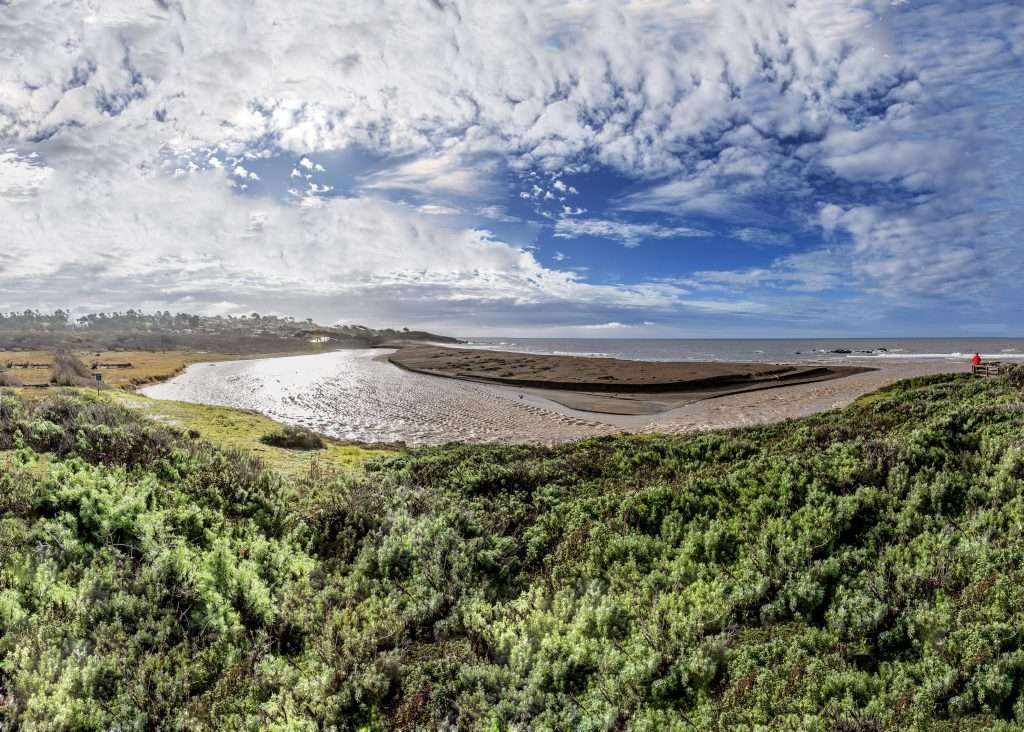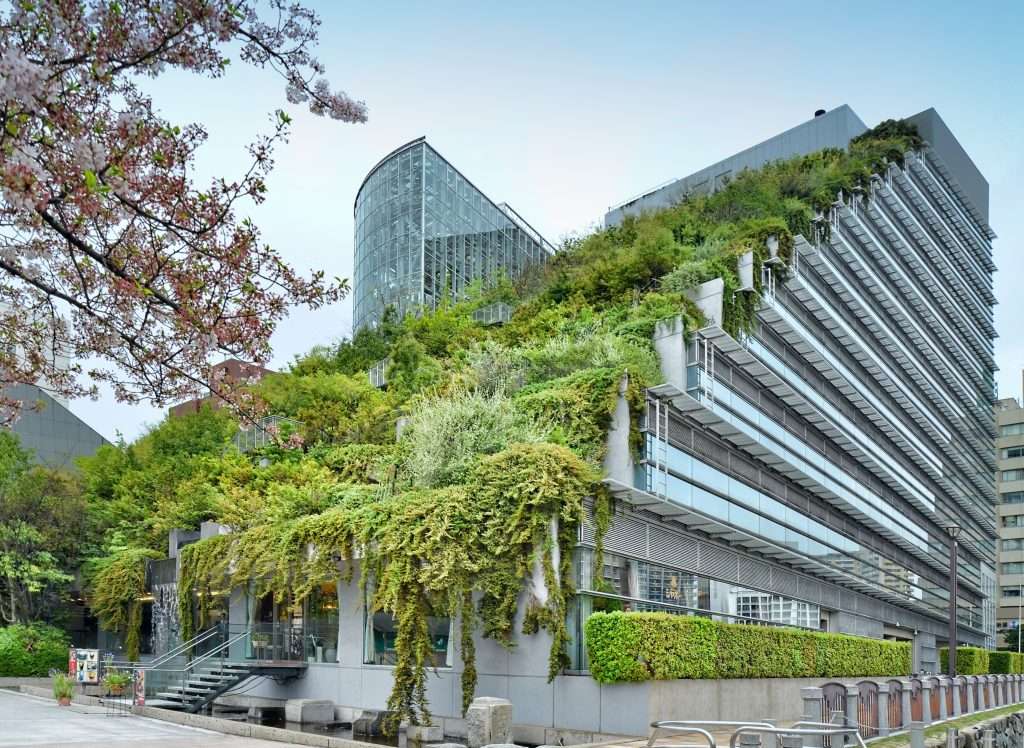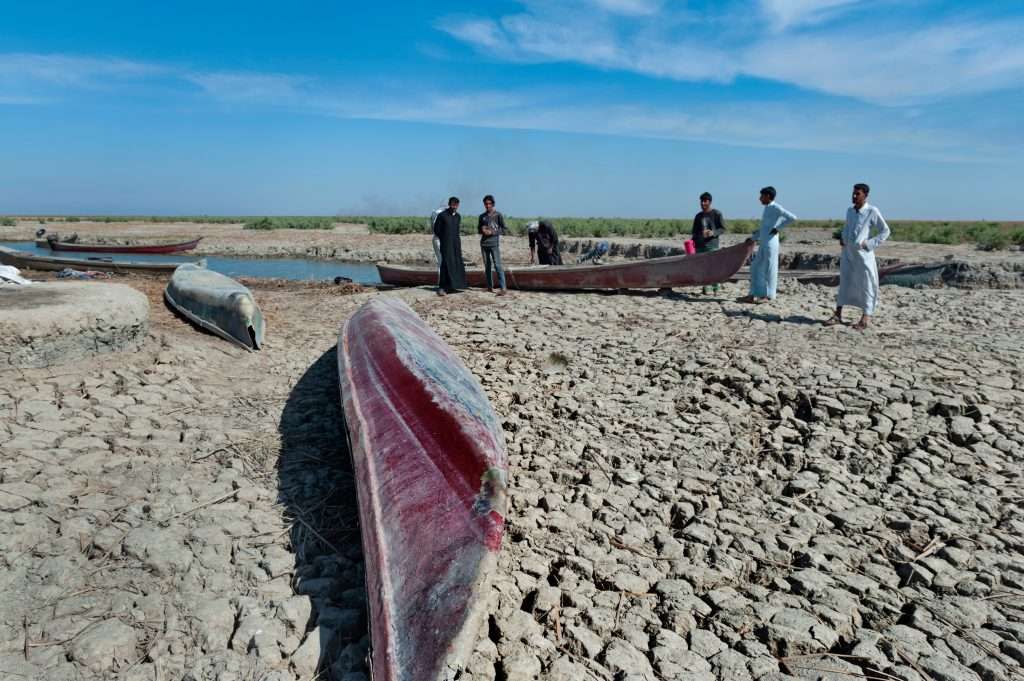Nature-based solutions (NbS) are actions that work with and enhance nature to help address societal challenges. The key is that these solutions provide benefits for both human wellbeing and biodiversity.
- What are nature-based solutions?
- Definition of nature-based solutions
- Key characteristics of nature-based solutions
- Examples of nature-based solutions in construction
- Benefits of nature-based solutions for climate change
- Mitigating climate change with nature-based solutions
- Adapting to climate change with nature-based solutions
- Nature-based solutions and the Paris Agreement
- Nature-based solutions for biodiversity and sustainable development
- Addressing biodiversity loss with nature-based solutions
- Nature-based solutions and the Sustainable Development Goals
- The Kunming-Montreal Global Biodiversity Framework and nature-based solutions
- Implementing nature-based solutions in construction projects
- Integrating nature-based solutions in building design
- Nature-based solutions for energy efficiency and waste management
- Project management considerations for nature-based solutions
- Engaging communities and stakeholders in nature-based solutions
- Involving local communities in nature-based solution projects
- Respecting indigenous peoples’ rights and knowledge
- Ensuring nature-based solutions benefit people and communities
- Policy and governance for nature-based solutions
- Policy frameworks supporting nature-based solutions
- The role of Intergovernmental Science-Policy Platforms
- Governance mechanisms for nature-based solutions
- FAQs in relation to nature based solutions
- What are some examples of nature-based solutions?
- What is a nature-based solution?
- What are the type 3 nature-based solutions?
- What is the UN definition of nature-based solutions?
What are nature-based solutions?
Definition of nature-based solutions
According to the International Union for Conservation of Nature, NbS are defined as:
“Actions to protect, sustainably manage, and restore natural or modified ecosystems, that address societal challenges effectively and adaptively, simultaneously providing human well-being and biodiversity benefits.”
In other words, NbS involves working with nature, rather than against it, to tackle some of the biggest challenges we face today – like climate change, biodiversity loss and sustainable development.
Key characteristics of nature-based solutions
So what makes a solution ‘nature-based’? There are a few key characteristics:
- NbS supports and enhances the ecosystem services that nature provides, like carbon storage, water filtration and flood protection.
- They deliver benefits for both people and biodiversity.
- NbS are adapted to the local context and community needs.
- They often involve systemic interventions at a landscape or seascape scale.
Essentially, NbS takes a holistic approach that recognises the interconnectedness of social, economic and environmental systems.
Examples of nature-based solutions in construction
So what does this look like in practice, especially in the construction industry? Here are some examples:
- Green roofs and walls that provide insulation, reduce urban heat island effects and support biodiversity.
- Permeable pavements and bioswales that manage stormwater runoff and reduce flood risk.
- Urban forests and parks that provide recreation, improve air quality and support mental health.
- Wetland restoration that buffers against coastal flooding and erosion.
The key is that these solutions bring more diverse natural features and processes into the built environment in a way that benefits both people and nature.


Benefits of nature-based solutions for climate change
One of the biggest challenges we face today is climate change. The good news? Nature-based solutions can play a key role in both mitigating and adapting to the impacts of a changing climate.Benefits include:
- Mitigating climate change with nature-based solutions
NbS can help mitigate climate change by reducing greenhouse gas emissions and enhancing carbon storage. For example, protecting and restoring forests, wetlands and other ecosystems can significantly increase carbon sequestration.
- Adapting to climate change with nature-based solutions
NbS can also help communities adapt to the impacts of climate change that are already happening. For instance:
- Mangrove restoration can protect coastal communities from storm surges and sea-level rise.
- Packing our cities with parks and green belts isn’t just for show – they’re like nature’s air conditioners, keeping those scorching heat waves at bay while making sure the air we breathe is cleaner.
- Restoring floodplains can buffer against increased flooding due to more intense rainfall events.
By working with nature, we can build resilience and help vulnerable communities adapt to a changing climate.
Nature-based solutions and the Paris Agreement
The importance of NbS for addressing climate change is recognised in the Paris Agreement. The agreement emphasises the role of ecosystems in both climate change mitigation and adaptation, and encourages countries to include NbS in their national climate plans.
However, while the potential of NbS is clear, they are not a silver bullet. To hit the targets set by the Paris Agreement and steer clear of climate change’s harshest consequences, we need to ramp up our efforts in cutting down carbon emissions across every sector.
Nature-based solutions for biodiversity and sustainable development
In addition to their climate benefits, NbS can also help address other pressing global challenges, like biodiversity loss and sustainable development.
Addressing biodiversity loss with nature-based solutions
We are currently facing a global biodiversity crisis, with an estimated 1 million species at risk of extinction. NbS can play a crucial role in addressing this crisis by protecting, restoring and sustainably managing ecosystems.
For example, restoring degraded lands and creating wildlife corridors can help prevent further biodiversity loss and support the recovery of threatened species.
Nature-based solutions and the Sustainable Development Goals
NbS can also contribute to achieving the Sustainable Development Goals (SDGs). By supporting ecosystem services and enhancing the resilience of communities, NbS can help:
- Reduce poverty (SDG 1)
- Improve food security (SDG 2)
- Ensure water security (SDG 6)
- Build sustainable cities and communities (SDG 11)
- Combat climate change (SDG 13)
- Protect life below water and on land (SDGs 14 and 15)
Essentially, by investing in nature, we can simultaneously address multiple development challenges and create a more sustainable future.
The Kunming-Montreal Global Biodiversity Framework and nature-based solutions
The importance of NbS for biodiversity is recognised in the recently-adopted Kunming-Montreal Global Biodiversity Framework. This global agreement includes a target to ensure that at least 30% of land and sea areas are conserved by 2030, with a focus on areas of particular importance for biodiversity and ecosystem services.
The framework also calls for the restoration of degraded ecosystems and the integration of biodiversity values into national and local planning – both key aspects of implementing NbS.


Implementing nature-based solutions in construction projects
So how can we effectively implement NbS in the construction industry? Here are a few key considerations:
- Integrating nature-based solutions in building design
NbS should be integrated into building design from the start, not as an afterthought. This means considering things like:
- Site selection and layout to minimise impact on ecosystems
- Incorporating green infrastructure like green roofs, walls and permeable pavements
- Designing for passive heating and cooling to reduce energy use
- Selecting materials with low embodied carbon and minimal impact on biodiversity
By integrating NbS into the design process, we can create buildings that are not only less harmful to the environment, but actively contribute to ecosystem health and resilience.
- Nature-based solutions for energy efficiency and waste management
Plus, nature-based solutions (NbS) can give your building’s operational efficiency a serious boost. For example:
- Biophilic design elements like green walls can improve indoor air quality and reduce the need for mechanical ventilation.
- Constructed wetlands can treat greywater and blackwater on-site, reducing the burden on municipal treatment systems.
- Composting and anaerobic digestion can turn organic waste into valuable resources like fertiliser and biogas.
By using NbS to manage energy and waste, we can create buildings that are more self-sufficient and have a lower environmental footprint.
- Project management considerations for nature-based solutions
Implementing NbS also requires a shift in project management practices. Some key considerations include:
- Engaging ecologists and other environmental experts early in the project to inform design and decision-making
- Setting clear biodiversity and ecosystem service targets and monitoring progress throughout the project lifecycle
- Collaborating with local communities and stakeholders to ensure NbS meet local needs and priorities
- Planning for the long-term maintenance and adaptive management of NbS post-construction
By taking a proactive and holistic approach to project management, we can ensure that NbS are implemented effectively and deliver lasting benefits.


Engaging communities and stakeholders in nature-based solutions
Successful NbS require the active engagement and participation of local communities and stakeholders. This can be be achieved by:
- Involving local communities in nature-based solution projects
Local communities are the people who will be most directly impacted by NbS projects. Involving them in the planning and implementation process can help ensure that projects are:
- Responsive to local needs and priorities
- Culturally appropriate and socially acceptable
- Designed to deliver tangible benefits to the community
- More likely to be maintained and cared for over the long-term
Community engagement can take many forms, from consultation and participatory planning to co-design and co-management of NbS.
- Respecting indigenous peoples’ rights and knowledge
Many NbS projects take place on lands and territories traditionally owned, occupied or used by indigenous peoples. In these contexts, it is critical to respect indigenous peoples’ rights, knowledge and practices.
This means following principles of Free, Prior and Informed Consent (FPIC), valuing traditional ecological knowledge, and ensuring that indigenous communities are able to participate in and benefit from NbS projects.
- Ensuring nature-based solutions benefit people and communities
Ultimately, the success of NbS should be measured not just by their environmental outcomes, but by their social and economic benefits as well. This means designing NbS projects to:
- Create jobs and support local livelihoods
- Improve health and wellbeing
- Enhance community resilience to climate change and other shocks
- Provide educational and recreational opportunities
- Contribute to a sense of place and cultural identity
By prioritising community benefits, we can ensure that NbS delivers not just for nature, but for people too.


Policy and governance for nature-based solutions
Scaling up NbS will require supportive policies and effective governance at all levels. Here are some of the key elements:
- Policy frameworks supporting nature-based solutions
Policy frameworks can help create an enabling environment for NbS by:
- Setting targets and commitments for NbS implementation
- Providing financial incentives and removing barriers to investment
- Integrating NbS into national and local planning processes
- Supporting research, innovation and capacity building for NbS
When we talk about plans and strategies that matter, think of national efforts to protect wildlife, climate change adaptation schemes and initiatives aimed at creating greener cities.
- The role of Intergovernmental Science-Policy Platforms
Intergovernmental science-policy platforms like the Intergovernmental Science-Policy Platform on Biodiversity and Ecosystem Services (IPBES) and the Intergovernmental Panel on Climate Change (IPCC) play a crucial role in synthesising scientific knowledge and informing policy decisions related to NbS.
These platforms can help build the evidence base for NbS, identify best practices and success stories, and provide policy-relevant advice to decision-makers.
- Governance mechanisms for nature-based solutions
To make sure nature-based solutions (NbS) are put into place fairly, with everyone able to see what’s happening and responsible for their actions, good leadership is a must. Key governance mechanisms can include:
- Multi-stakeholder partnerships and collaborative platforms
- Community-based management and co-governance arrangements
- Participatory monitoring and evaluation systems
- Grievance and redress mechanisms
Setting up strong rules and guidelines means we can really make sure nature-based solutions (NbS) keep their promise to help us create a greener, more durable future for everyone.
FAQs in relation to nature based solutions
Examples of nature-based solutions include green roofs, urban forests and wetland restoration. These solutions work in harmony with nature to address issues such as flooding and pollution.
A nature-based solution is a strategy that uses natural processes to overcome societal challenges. The key principle is to work with nature, rather than against it.
Type 3 nature-based solutions focus on systemic changes. They blend natural and built environments to promote sustainable urban development.
According to the UN, nature-based solutions are actions that protect, manage and restore natural or modified ecosystems. These actions are designed to address societal challenges effectively and adaptively.